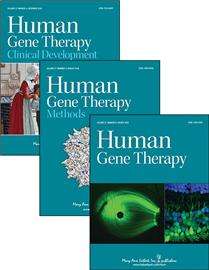Credit: Mary Ann Liebert, Inc., publishers
Many gene therapy-based approaches are in development to combat genetic and other causes of blindness and vision loss, and much can be learned about the safety and effectiveness of these promising new therapies by studying them first in non-human primates before initiating clinical trials, as shown by the results of a study published in Human Gene Therapy.
A team of researchers led by Jean Bennett, Scheie Eye Institute, University of Pennsylvania, Perelman School of Medicine, Philadelphia, evaluated and compared two adeno-associated virus (AAV) vectors designed to deliver therapeutic genes directly to the eye when administered via subretinal injection to non-human primates. They report the differences in gene expression efficiency and immunogenicity across different doses in the article entitled "Evaluation of Dose and Safety of AAV7m8 and AAV8BP2 in the Non-human Primate Retina."
Gene therapies developed and tested in mice may present quite different safety and efficacy profiles when administered to humans. Evaluating gene delivery vectors in non-human primates provides results that are more predictive of what one can expect in humans.
"Dr. Bennett and her team have already made major breakthroughs in gene therapy for genetic causes of blindness. The work published here promises to greatly improve the technology for ocular gene therapy," says Editor-in-Chief Terence R. Flotte, MD, Celia and Isaac Haidak Professor of Medical Education and Dean, Provost, and Executive Deputy Chancellor, University of Massachusetts Medical School, Worcester, MA.
More information: Pavitra S. Ramachandran et al, Evaluation of Dose and Safety of AAV7m8 and AAV8BP2 in the Non-Human Primate Retina, Human Gene Therapy (2016). DOI: 10.1089/hum.2016.111
Journal information: Human Gene Therapy
Provided by Mary Ann Liebert, Inc






















